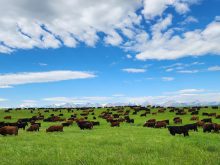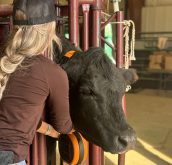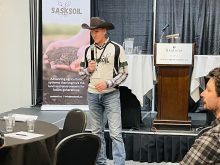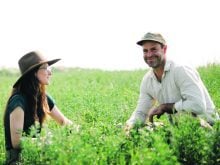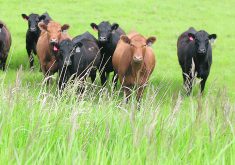Glacier FarmMedia – In northern Saskatchewan, a two-year trial is managing cattle herds using advanced technology and strategies.
John and Deanne Chuiko, who own CJ Ranching near St. Walburg, Sask., run a cow-calf and long yearling operation that spans 4,200 acres of owned and rented land, along with 7,500 acres of forest. The trial uses a virtual fencing program called Vence from Merck Animal Health USA and is set to conclude next summer.
“You think it’s Saskatchewan, you think it’s flat, but in northern Saskatchewan, it’s a lot of bush and bog and sloughs and hills and rocks, and it can be a tough place,” John Chuiko said during the Manitoba Forage & Grassland Association regenerative agriculture conference in Brandon last fall.
Read Also
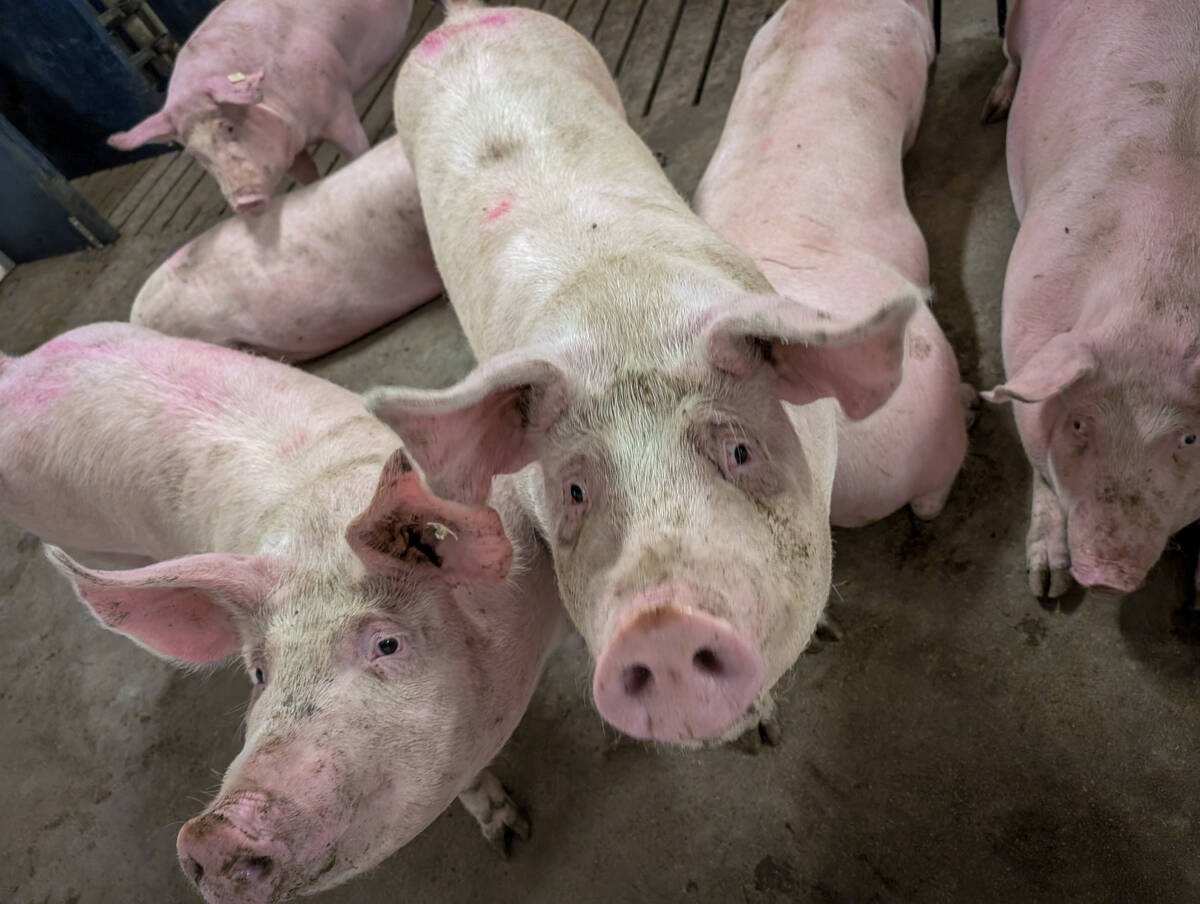
Pork sector targets sustainability
Manitoba Pork has a new guiding document, entitled Building a Sustainable Future, outlining its sustainability goals for the years to come.
The project is funded by Saskatchewan Agriculture and the Saskatchewan Stock Growers Association, with equipment provided by Merck. It introduces base stations that enable virtual fencing and livestock tracking. The stations, which cost $13,000 each, act as communication hubs that transmit data to a rancher’s smartphone and can cover up to 10,000 acres, depending on the terrain.
The Chuikos decided to take part in the trial in part to combat over-grazing.
“We wanted to do better with our land,” Chuiko said. “This technology is going to help us push these animals out into these places that they don’t typically go.”
The couple outfitted 407 animals with collars and trained them with the system, which uses audio warnings and electric shocks, over a four-day period.
“The training had to be with permanent fencing on the perimeter on day one. The virtual fence is set up just inside your hard perimeter and (it administers) shock only on day two. That fence moves a little bit farther in, again shock only.
“On day three, they add an audio, so there’ll be an audio warning first and if (an animal) keeps going, then she gets a shock. Again, it’s moved just a little bit farther inside and then on day four, another virtual fence gets put up in the middle of a paddock with the audio and then the shock,” Chuiko said.
Their rented quarter has no cross-fencing, so they used to build eight to 10 cross fences in order move cattle multiple times a day. Virtual fencing eliminated the need for that task. Exclusion zones were also created to protect two small water holes frequented by waterfowl, which were not primary water sources for the cattle.
While the system has shown promise, it has faced challenges. Collar retention has been an issue, particularly among bulls. Only two of the 15 bulls kept their collars throughout the breeding season. Seven per cent of cows also lost their collars.
Battery life is another obstacle, with 29 collars — seven per cent of the herd — reading “critical battery” by the time of Chuiko’s November presentation.
“It would sure be nice if the batteries lasted a little longer,” he said.
Signal errors affected 32 collars, and water infiltration may have been a factor.
Managing the collars, particularly during uncollaring and data collection, required additional labour, highlighting the need for improved batteries in the next phase.
Despite setbacks, the Chuikos said the system has given them peace of mind by allowing them to monitor their cattle remotely and quickly address potential issues. A small percentage of cattle breached the virtual fences, but overall, the system has improved grazing distribution and allowed for better herd management in challenging terrain.
The Chuikos are now in talks to see if they can extend the trial, and they hope the technology will become commercially available as soon as 2026.
“The quality of life (the system provides) is absolutely worth it, 100 per cent.”
Chuiko also believes the technology would be ideal for anyone interested in regenerative agriculture.
“If you’re just starting this regen thing and you’re overwhelmed with all the fence you have to put up, this technology might be very appealing,” he said, adding he also sees potential for the program in the dairy sector.
The program operates on a subscription basis, costing US$50 per collar per year. As the trial progresses, plans include refining collar designs for better retention, longer battery and signal reliability and use of aerial technologies for sorting livestock.
“I think this technology is just going to get better,” Chuiko said. “I think there’s tremendous value here.”






